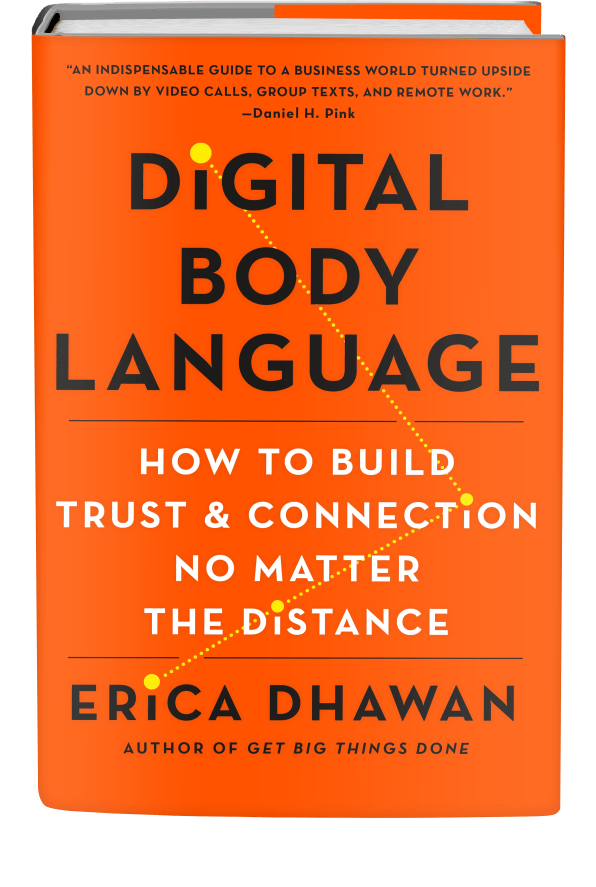Does your office have a digital mansplaining problem?
By Erica Dhawan
Many women are raised and conditioned to build consensus. Many men, on the other hand, aren’t. Even when they lack expertise, men are encouraged to speak authoritatively—which also extends into their online behavior. Australian feminist and author Dale Spender calls the often-patronizing ways in which men try to “explain” something to women (who may actually know more about the subject than they do) “digital mansplaining.” Many men are simply accustomed to grabbing more airtime in conversations, and if a woman is present, either they’ll interrupt her or talk right over her.
In a digital workplace, this behavior only gets amplified. In a viral Quartz article by Leah Fessler called “Your Company’s Slack Is Probably Sexist,” she noted that men are more likely to declare their opinions as facts and send along a link to an article without comment or sometimes even context. Women by contrast typically explain why they are passing along a link—”per our previous conversation about climate change”—or another way to explain why it might be of interest to the recipient. Says one female Slack user about the comments of her male coworkers, “They just toss [a link] in because their interest in it was enough to warrant sharing it—they’re assuming you’ll receive their gift with graciousness, then they walk away.”
I belong to a Facebook group of peers in the professional speaking industry. It’s evenly divided between men and women who come together every so often to share advice. One guy in our group, whom I’ll call Dan, never responds to questions. He’s not there, it seems, to engage or help. He simply wants an appreciative audience. We all know to avoid him and ignore his behavior. From Dan and others, I’ve observed that digital mansplaining isn’t just about interrupting people, it’s also about a person (usually male) conveying an unassailable entitlement in tone and style.
According to researcher and linguist Susan Herring, the male tendency to mansplain is timeless—and could be seen at the dawn of the internet age. In the early 1990s, for example, Herring joined a listserv comprising more than 1,000 other linguists. “Many were claiming that online, gender and other social differences would be invisible; you wouldn’t be able to tell who was who, or judge anyone based on their identity,” she recalls. That wasn’t the case, though. The online discussions that Herring at least followed tended to be divisive. One especially caught her eye, as the topic in question had broad appeal across the entire linguistic community and historically prompted numerous, valid opinions from both genders. “However, it was almost entirely men engaging,” Herring remembers.

Wondering why the women in the group were holding back, Herring sent out a survey. When the results came in, nearly all the female respondents reported that they disliked the contentious style and tone of the digital discussion, and found participating in it to be unproductive. Herring finds this same dynamic on crowdsourced Wikipedia articles, concluding what a lot of people (especially women) know already, namely that “some contributors, anonymous and otherwise, use rude and haranguing language. Such environments are—if not outright intimidating—unappealing to many women.”
That said, is there such a thing as “womansplaining?” Does it go both ways?
In my case, at least, I admit it might. Every year, for example, my family plans a group vacation. A few years ago, during a particularly busy time in my career, my husband volunteered to take over my traditional duties as chief vacation officer. Reluctantly I agreed, assuming he would be terrible at it.
Over the next few weeks, in addition to juggling my work schedule, I insisted on reviewing every vacation option he came up with. Had he checked to see if the hotel offered free breakfast? Were there photos of the rooms he’d reserved? Hold on a second—was I mansplaining, no, wait, womansplaining? I was. I was interrupting and talking over his plans and ideas with my own plans and ideas, which I secretly suspected were superior. Even when he and I agreed on something, I insisted on saying it louder. Yeah, I can be a micromanager and a know-it-all, and aren’t those secondary characteristics of a man- or womansplainer?
Is there any way to shut a peoplesplainer down? Yes. Managers can stop digital interrupters from hijacking a phone or video call by being firm about who speaks, and for how long. “Follow good chairing protocols,” advises Andre´ Spicer, an expert in organizational behavior at Cass Business School in London. “At the beginning, say: ‘This is the purpose of the meeting, this is how long we’ve got, we’re going to spend this much time on each item, and here’s how we’d like you to share.’” Simply being more aware of who is “loudest” in messages, on phone calls, and in meetings will help you guide your team to collaborate confidently by making sure everyone gets sufficient airtime.
The digital workplace flattens many traditional gender biases we’ve known for years. Women can be more resolute, and men can realize there is new space to show warmth and affection. At the same time, certain traditional gender norms are amplified, such as women who still feel the need to be “liked” by peppering their digital communications with exclamation marks and modifiers. Perhaps the greatest advantage is that our digital body language provides an accurate visual mirror that reflects what has occurred for so long in spoken cross-gender communication. Maybe looking in that mirror, we can ask ourselves: how can I just be myself?
Modified excerpt from Digital Body Language: How to Build Trust and Connection, No Matter the Distance by Erica Dhawan. Copyright © 2021 by the author and reprinted by permission of St. Martin’s Publishing Group.
Erica Dhawan is a leading expert on 21st-century collaboration and innovation. She is an award-winning keynote speaker and the author of the new book Digital Body Language. Download her free guide to “End Digital Burnout.”
(32)



